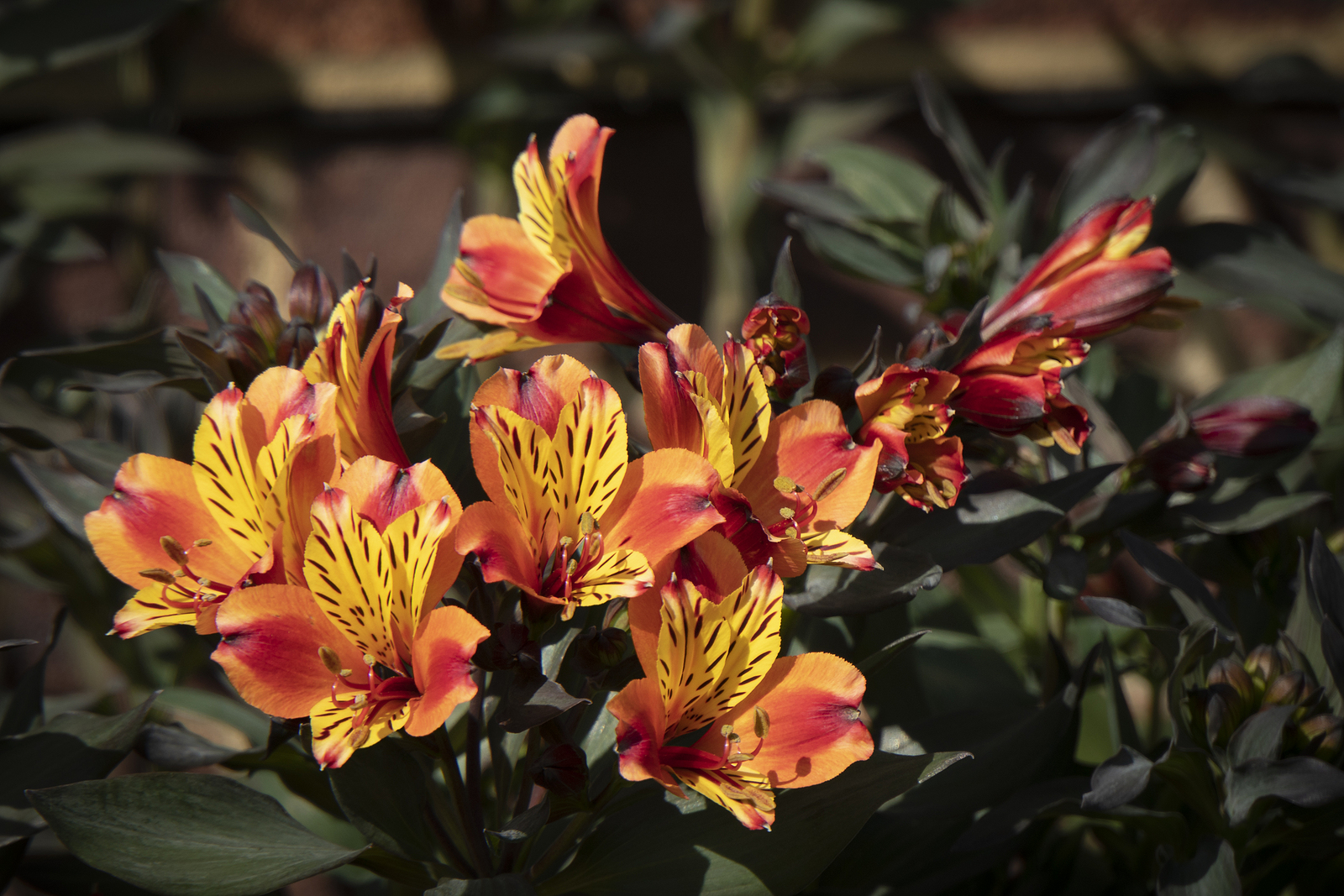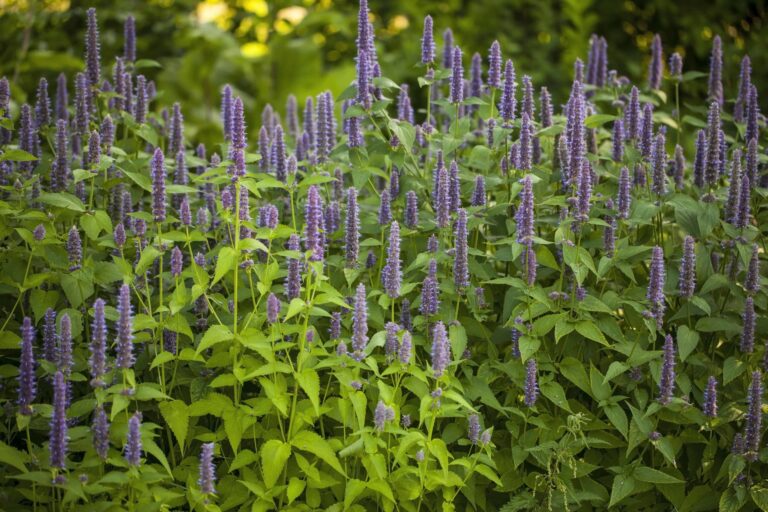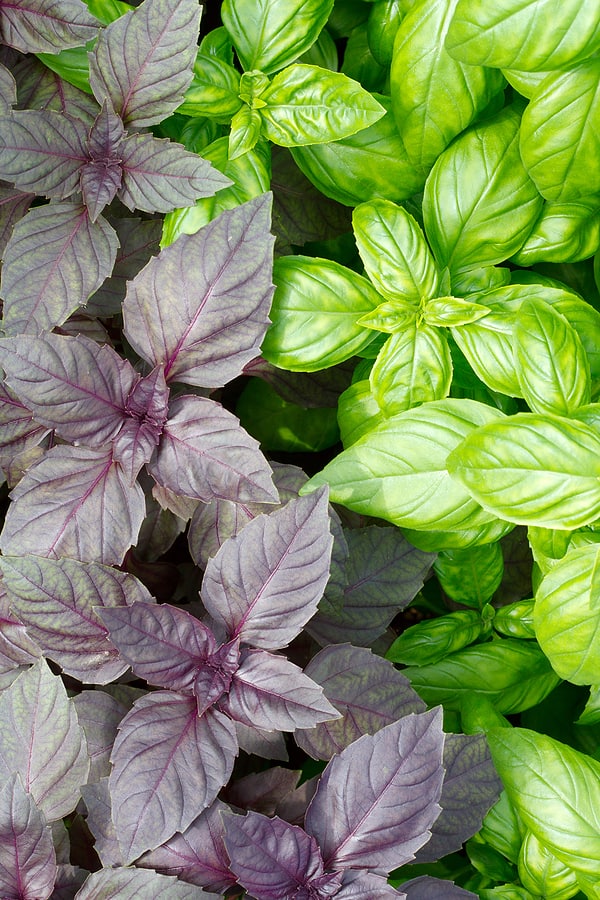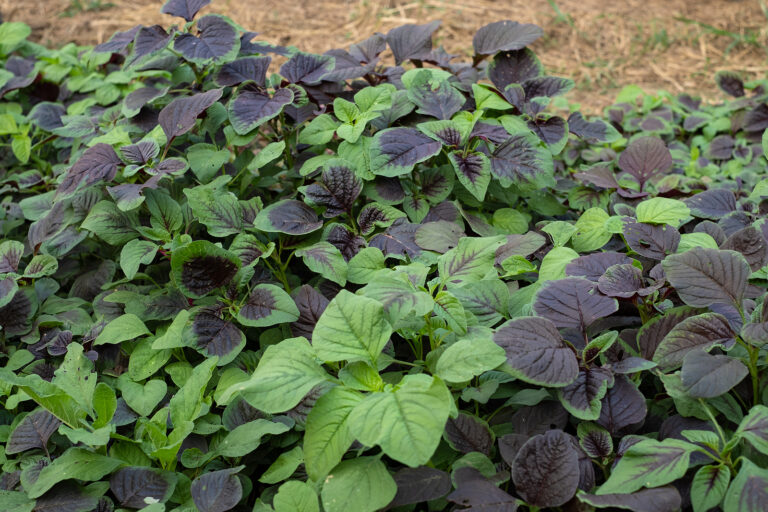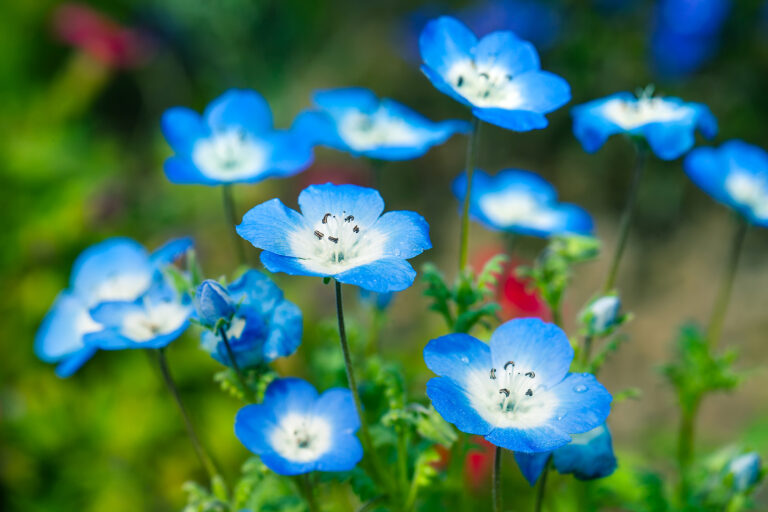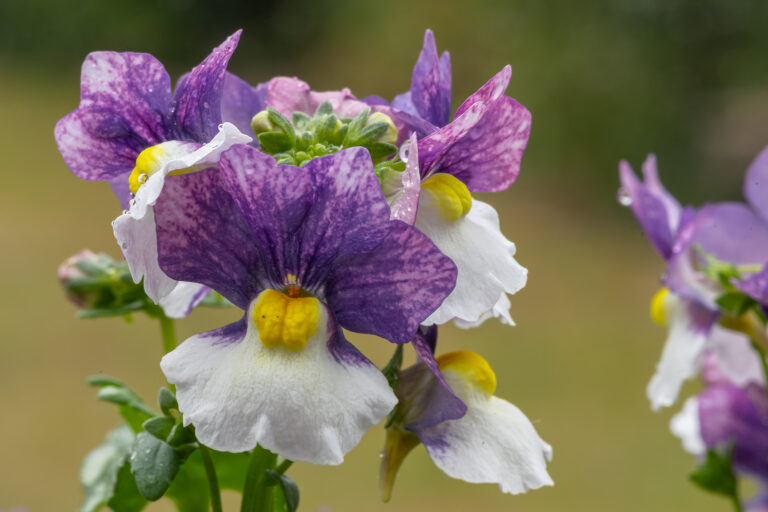How to Grow Painted Tongue — Salpiglossis
Salpiglossis—commonly called painted tongue–is a cool-summer annual with colorful marbled or streaked flowers. Salpiglossis blooms come in shades of mahogany, red, reddish-orange, yellow, purple, and pink.
Salpiglossis is loose to densely branched with sticky leaves and stems. It grows 24 to 36 inches (61-91cm) tall.
Plant Salpiglossis as a border background plant or use it in mixed plantings and containers. It is an excellent cut flower.
There are only two species in the Salpiglossis genus. Salpiglossis is native to the Andes in Chile.
Garden Success Products at Amazon:
- 10 pcs Stainless Steel Garden Hand Tool Set
- Flexi Hose with 8-inch Nozzle
- Gorilla Cart 4 Cu. Ft, 300-pound Capacity
- Neem Bliss 100-% Cold Pressed Neem Oil
- Safer Brand Insect Killing Soap

Salpiglossis Overview
Salpiglossis, commonly known as painted tongue or trumpet flower, is a striking annual or biennial plant native to South America, particularly Chile. It’s known for its uniquely beautiful, trumpet-shaped flowers that feature intricate, velvety petals often streaked and veined in contrasting colors. The blooms come in an array of shades, including deep purple, red, blue, yellow, and orange, creating a painterly effect that brings vivid artistry to the garden.
Salpiglossis Characteristics
- Height and Growth Habit: Salpiglossis typically grows between 12 to 30 inches tall, with an upright and somewhat bushy habit. Some varieties can reach up to 36 inches.
- Foliage: The plant has narrow, lance-shaped green leaves that add to its elegant appearance.
- Flowers: The showy blooms are approximately 2-3 inches wide, with petal patterns that give them a stained-glass effect. The blooms often have contrasting throats that add to their eye-catching appeal.
- Soil and Water Requirements: Salpiglossis prefers rich, well-draining soil with consistent moisture but should not be waterlogged. It thrives in a slightly acidic to neutral pH and should be protected from overly dry conditions.
Salpiglossis Uses in the Garden
- Flower Borders: Salpiglossis is perfect for mixed flower borders where its vibrant, multi-hued blooms can create a striking focal point. Plant it towards the middle or back of borders to provide a dramatic, colorful backdrop.
- Cottage Gardens: The classic look of salpiglossis fits beautifully into cottage-style gardens where it can be combined with other nostalgic blooms such as snapdragons, cosmos, and delphiniums.
- Containers and Pots: Because of its compact and upright growth, salpiglossis is well-suited for containers and pots. Place containers on patios, balconies, or porches to enjoy the detailed flowers up close.
- Cut Flower Gardens: The blooms of salpiglossis are excellent for cutting and using in floral arrangements. Their unique patterns and long stems make them an attractive addition to vases, bringing vibrant, exotic color indoors.
- Mass Plantings: For a stunning display, plant salpiglossis en masse. This approach highlights their dramatic colors and creates an impressive statement in garden beds or large planters.
Salpiglossis Essential Garden Tips
- Sunlight: Plant salpiglossis in full sun to partial shade. Full sun encourages more abundant blooming, but in hotter climates, some afternoon shade can prevent the plants from wilting.
- Spacing: Space plants about 12-15 inches apart to ensure good air circulation and reduce the risk of disease.
- Companion Planting: Pair salpiglossis with other complementary flowers like petunias, verbena, and pansies to create a layered and colorful display.
- Care and Maintenance: Regular deadheading of spent flowers will encourage continuous blooming. Salpiglossis can be somewhat susceptible to root rot and fungal diseases, so ensure the soil drains well. Avoid wetting the foliage when watering to minimize the risk of mildew.
By incorporating salpiglossis into your garden, you can introduce an elegant, colorful touch that showcases nature’s artistry. It’s a wonderful choice for adding depth, detail, and vibrant contrast to any flowerbed or garden design.
Get to know Salpiglossis
- Plant type: Annual
- Growing zones and range: All zones a cool-summer annual
- Hardiness: Cool-weather annual
- Height and width: Upright, open habit grows 24 to 36 inches (61-91cm) tall
- Foliage: Sticky leaves and stems; leaves to 4 inches (10cm) narrowly oblong
- Flowers: Velvety-textured flowers much like petunias in shade and size; flowers to 2 inches (5cm) wide.
- Flower colors: Shades of mahogany, red, reddish-orange, yellow, purple, and pink tones, marbled and penciled with contrasting colors.
- Bloom time: Late spring and early summer
- Uses: Border background plant; used in mixed plantings and containers; excellent cut flowers.
- Common name: Painted tongue, velvet flower
- Botanical name: Salpiglossis sinuata
- Family name: Solanaceae
- Origin: Andes
Where to plant Salpiglossis
- Plant Salpiglossis in full sun.
- Grow Salpiglossis in average to humus-rich, well-drained soil.
- Plants grow best when summer is not excessively hot.
- Where summers are warm plant Salpiglossis where it will get light afternoon shade.
Salpiglossis uses
- Plant Salpiglossis in beds and borders; use it in the middle of borders or as a background plant. It is complemented by Gypsophila and Nigella.
- Cut flowers can be used in bouquets.
- Smaller cultivars can be used as bedding or in containers.
When to plant Salpiglossis
- Sow seeds indoors in individual pots 8 to 10 weeks before the last spring frost.
- Hardened-off seedlings can be moved to the garden 2 weeks before the last frost in spring.
- Sow seed outdoors just before the average last frost date.
- Where summer is hot, start plants early so they have time to bloom before warm weather arrives.

Planting and spacing Salpiglossis
- Sow seeds at 70° to 75°F (21°-24°C).
- Just press the tiny seeds into the soil surface; seeds need darkness to germinate so cover the seed lightly with soil or place black plastic over seed-starting pots.
- Germination takes 7 to 14 days.
- Mulch seedlings when they are several inches tall to keep roots cool.
How to water and feed Salpiglossis
- Keep the soil evenly moist.
- Add an all-purpose fertilizer to garden soil before setting Salpiglossis in the garden.
Salpiglossis care
- Stake tall plants to keep them from flopping.
- Pinch out tips of growing plants to induce branching.
- Regular deadheading will keep flowers blooming until frost.
Salpiglossis pests and diseases
- Soil-borne fungal diseases may cause wilt and dieback.
Salpiglossis propagation
- Sow seed outdoors in late winter or spring indoors.
- Seeds germinate in 7 to 10 days at 70° to 80°F (21°-27°C).
- Potted plants for indoors, can be sown in late summer for early spring flowering.
Salpiglossis varieties to grow
- Salpiglossis sinuata, painted tongue: erect, somewhat weak-stemmed annual grows 18 to 24 inches (45-61cm) tall; bears five-lobed flowers to 2 inches across from summer to fall; a full range of rich colors. There are several cultivars including a few dwarf cultivars.
Painted tongue–Salpiglossis frequently asked questions
Q: What conditions does a painted tongue plant like?
A: Salpiglossis–painted tongue–grows best where summers are moderate, in full, and humus-rich, well-drained soil. They must have a continuous supply of moisture.
Q: How do I propagate Salpiglossis?
A: Propagate Salpiglossis by seed. Sow seeds indoors 8 weeks before planting out. Set plants out after all danger of frost has passed. Seeds should be covered; they need darkness to germinate. Seeds germinate in 15 to 20 days at 70° to 75°F.
Q: How do I keep mature painted tongue plants upright?
A: Mature Salpiglossis has a tendency to lean or flop over. Locate them in the center of planting where they are protected from wind, Push brushwood into the ground around young plants; the foliage will hide the support as it grows.
Q: Where should I plant painted tongue in the flower garden?
A: Salpiglossis is ideal for the center of beds or borders. Place them at the center of container plant arrangements surrounded by lower-growing or trailing plants.
Related Articles:

